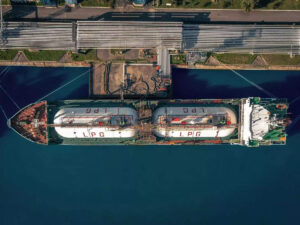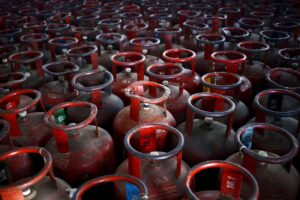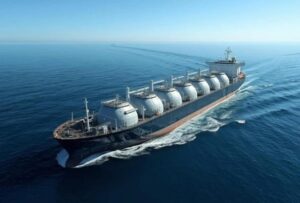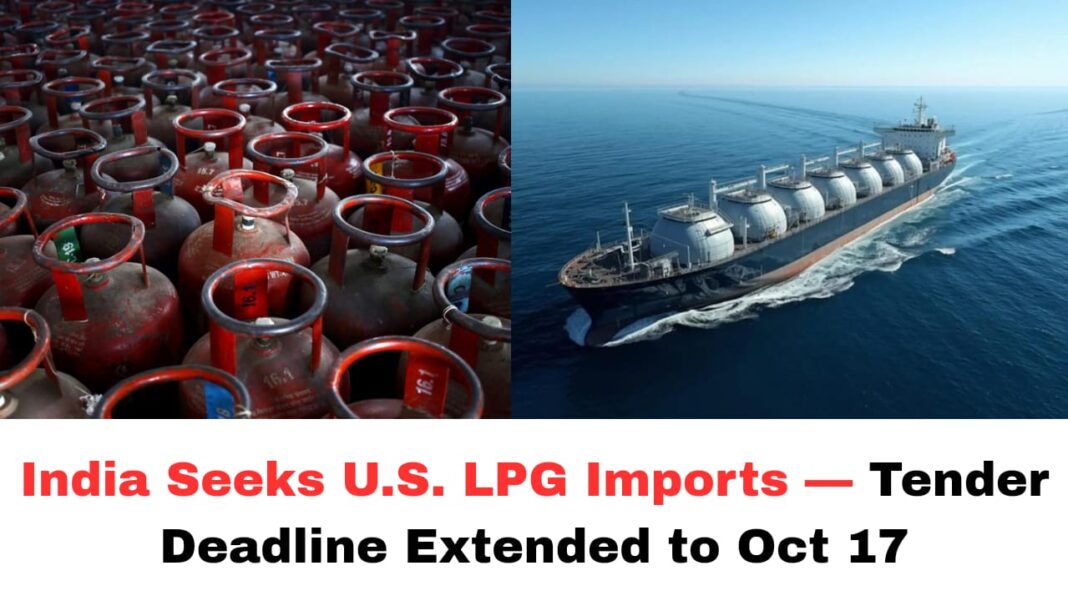Digital News Guru Business Desk:
India Extends Deadline for U.S. LPG Import Tender: A Strategic Move in Energy Diplomacy
India has decided to extend the deadline for its first joint long-term tender to import liquefied petroleum gas (LPG) from the United States. The new closing date is October 17, 2025, giving bidders an additional week to submit their offers for delivery in 2026.
The tender, issued by the three state refiners — Indian Oil Corporation (IOC), Bharat Petroleum Corporation (BPCL), and Hindustan Petroleum Corporation (HPCL) — seeks the procurement of approximately 2 million metric tons of LPG, equivalent to 48 very-large gas carriers (VLGCs).

Background & Rationale
This initiative marks a significant strategic pivot in India’s LPG sourcing policy. Historically, India has depended heavily on suppliers from the Middle East, with over 90% of its LPG imports sourced from that region in 2024.
However, India intends to import about 10% of its cooking gas demand from the U.S. beginning in 2026.
The extension of the deadline is likely intended to allow more room for bidders to firm up logistics, financing, and compliance considerations—especially given that this is the first such large-scale, coordinated procurement from the U.S. for India.
From a policy perspective, the move serves multiple goals:
- Diversification of energy suppliers
Reducing reliance on the Middle East improves energy security, hedges geopolitical risks, and gives India bargaining leverage in global energy markets. - Addressing trade friction with U.S.
The shift is also seen in light of India’s large trade surplus with the U.S. By increasing U.S. energy imports, Delhi may hope to reduce political pressure in bilateral trade negotiations and mitigate the risk of retaliatory tariffs. - Supporting a broader energy transition
While LPG is a fossil fuel, diversifying import sources can help India manage supply disruptions better as it gradually transitions to greener alternatives in the energy mix. - Responding to changing global LPG pricing
Middle Eastern producers, notably Saudi Aramco, have already adjusted their official selling prices (OSP) for propane and butane. For instance, Saudi Aramco cut the price of propane by $25/ton (to $495) and butane by $15/ton (to $475) in response to market conditions.
These shifts make global sourcing more competitive, but freight, logistics, and contractual arrangements remain key differentiators.
Challenges & Key Considerations
The path to securing U.S. LPG supplies is not without hurdles:
- Freight and logistics costs
Transporting LPG across long distances is capital-intensive and sensitive to shipping rates, route risks, and storage constraints. Historically, higher freight costs have made U.S. LPG less attractive compared to nearer suppliers.

- Contract structure & risk management
Buyers and sellers need to structure contracts carefully—fixing prices, managing currency risk, defining delivery terms (FOB, CFR, etc.), and building in flexibility for market fluctuations. - Timing & supply adequacy
Ensuring reliable, consistent delivery over long-term contracts is vital. While this tender is for 2026, prospects for fulfilling large volumes over multiple years would require confidence in U.S. LPG production and export capacity. - Domestic pricing & subsidy implications
India sells LPG to households at subsidized rates. Any import cost escalation must be managed so that subsidies remain sustainable without placing excessive burden on the exchequer. - Geopolitical risk and trade policy shifts
Energy markets are sensitive to diplomatic developments, sanctions, or shifts in U.S. export policies.
Implications & Outlook
If India successfully secures significant volumes of U.S. LPG, the impacts could ripple across multiple dimensions:
- Reduced dependency on the Middle East
A meaningful share of U.S. imports would ease India’s concentration of supply risk from Gulf suppliers. - Stronger U.S.–India energy ties
It could strengthen strategic partnership in energy, and offer New Delhi some leverage in future bilateral trade or energy deals. - Market signaling
This tender signals to global LPG producers and traders that India is open to diversified sourcing—and may trigger suppliers to compete more aggressively on terms. - Domestic sector stimulation
Indian refiners and energy firms would need to scale logistics, storage capacity, and infrastructure to integrate imported U.S. LPG flows. - Trade balance effects
An increase in U.S. LPG imports helps in reducing India’s trade surplus with the U.S., which has been a point of tension amid broader trade negotiations.

In prior months, BPCL already showed interest in U.S. oil purchases—IBM reported that BPCL awarded a tender for 10 million barrels of U.S. crude via a European trader, as part of its alignment toward U.S. energy imports.
This pattern reinforces the idea that India is gradually deepening its energy trade with the U.S.
Still, global energy markets are volatile. U.S. LPG supply could be affected by factors such as shale production constraints, export infrastructure bottlenecks, or policy changes. Also, competition from other buyers, shipping rates, and currency fluctuations can influence final viability.
Conclusion
India’s decision to extend the deadline for its first joint U.S. LPG import tender is more than a procedural tweak—it reflects a broader strategic recalibration in energy sourcing, trade relations, and supply security. If implemented successfully, the plan to import ~10% of cooking gas from the U.S. by 2026 could mark a turning point in India’s energy diplomacy.
Nevertheless, achieving this vision will require navigating logistical, contractual, and market challenges. The extra week’s extension may give bidders more time to refine proposals, but the real task will lie in executing and integrating U.S. LPG imports into India’s existing energy system.
You May Also Read: PM Modi Inaugurates Phase 1 of Navi Mumbai International Airport








